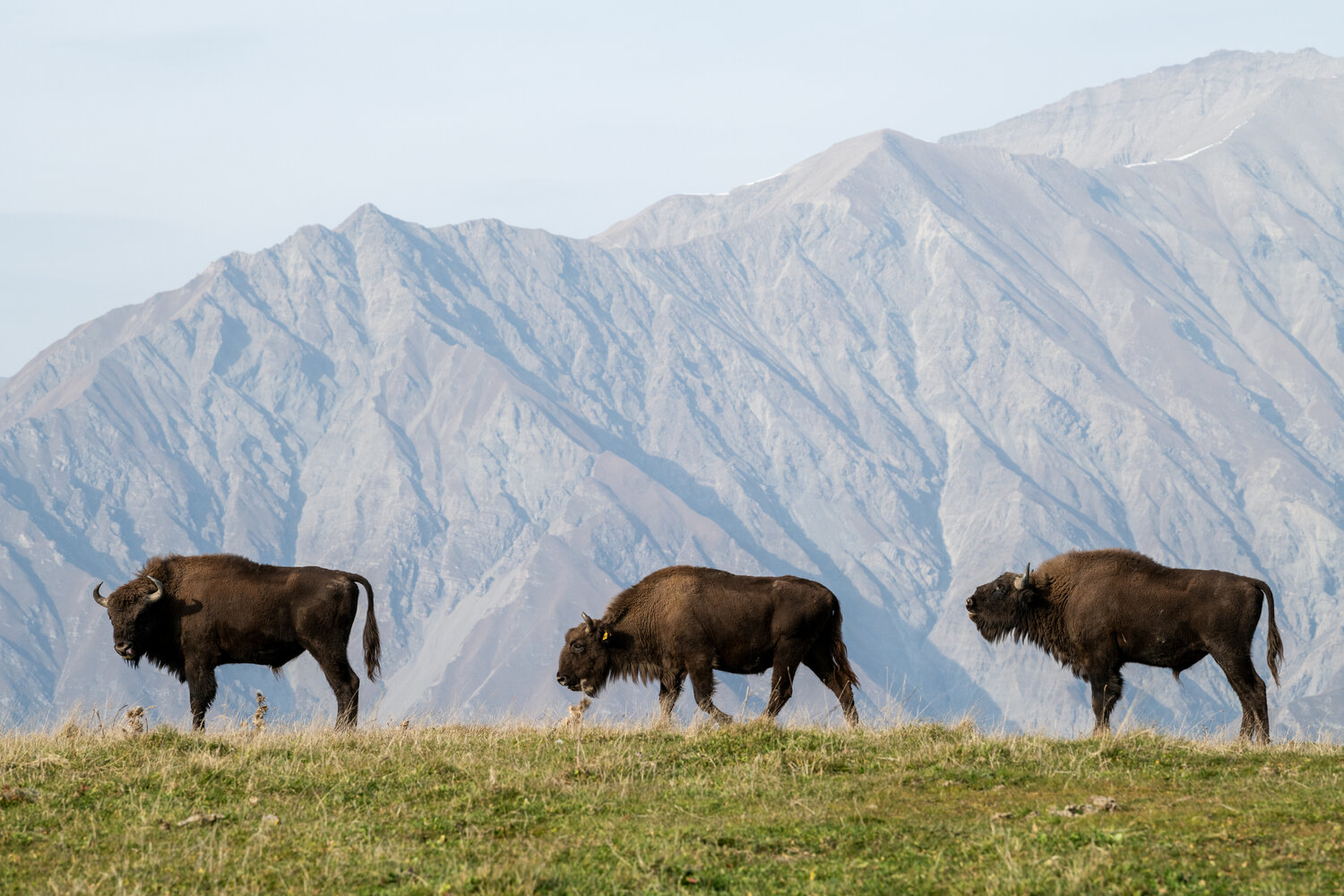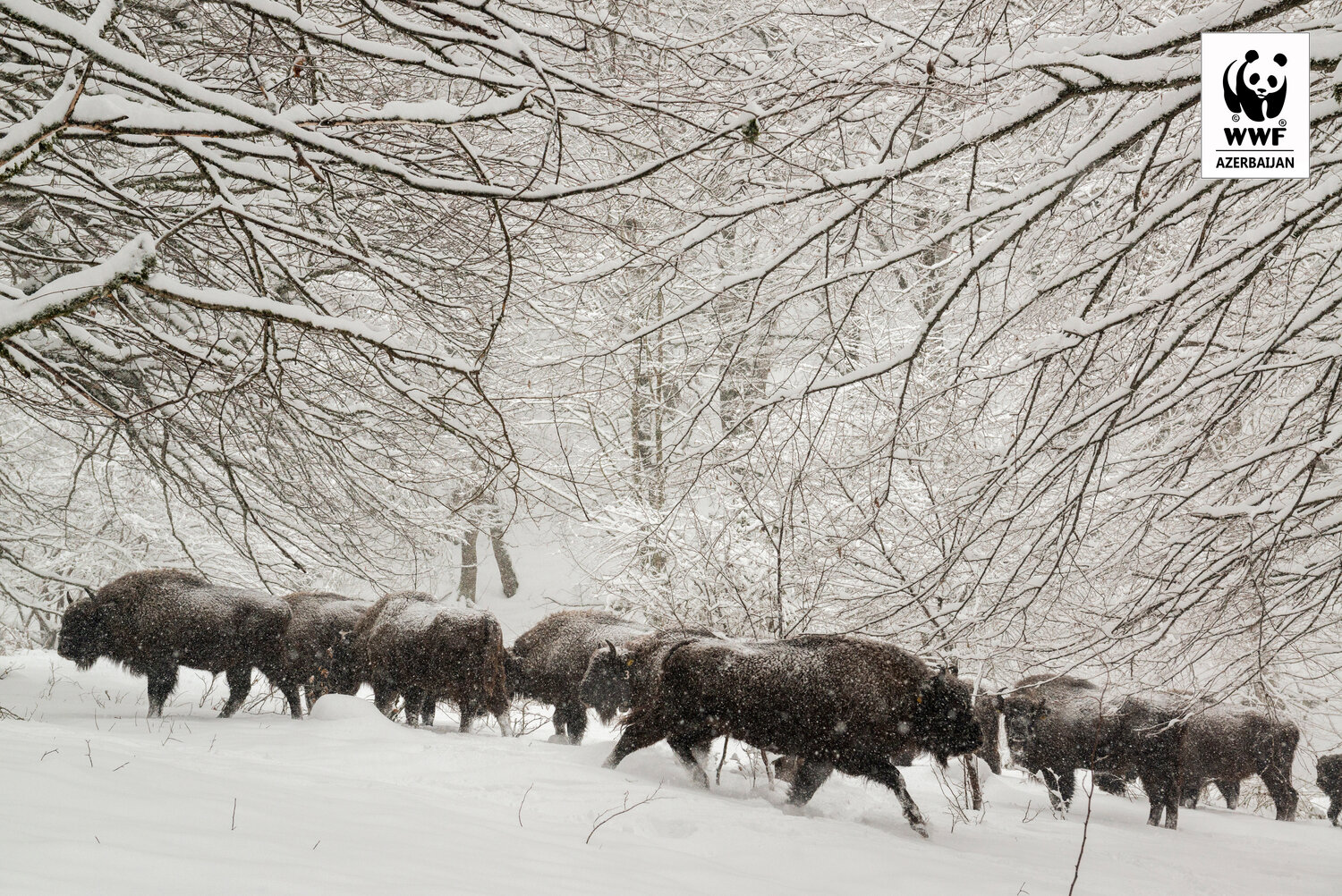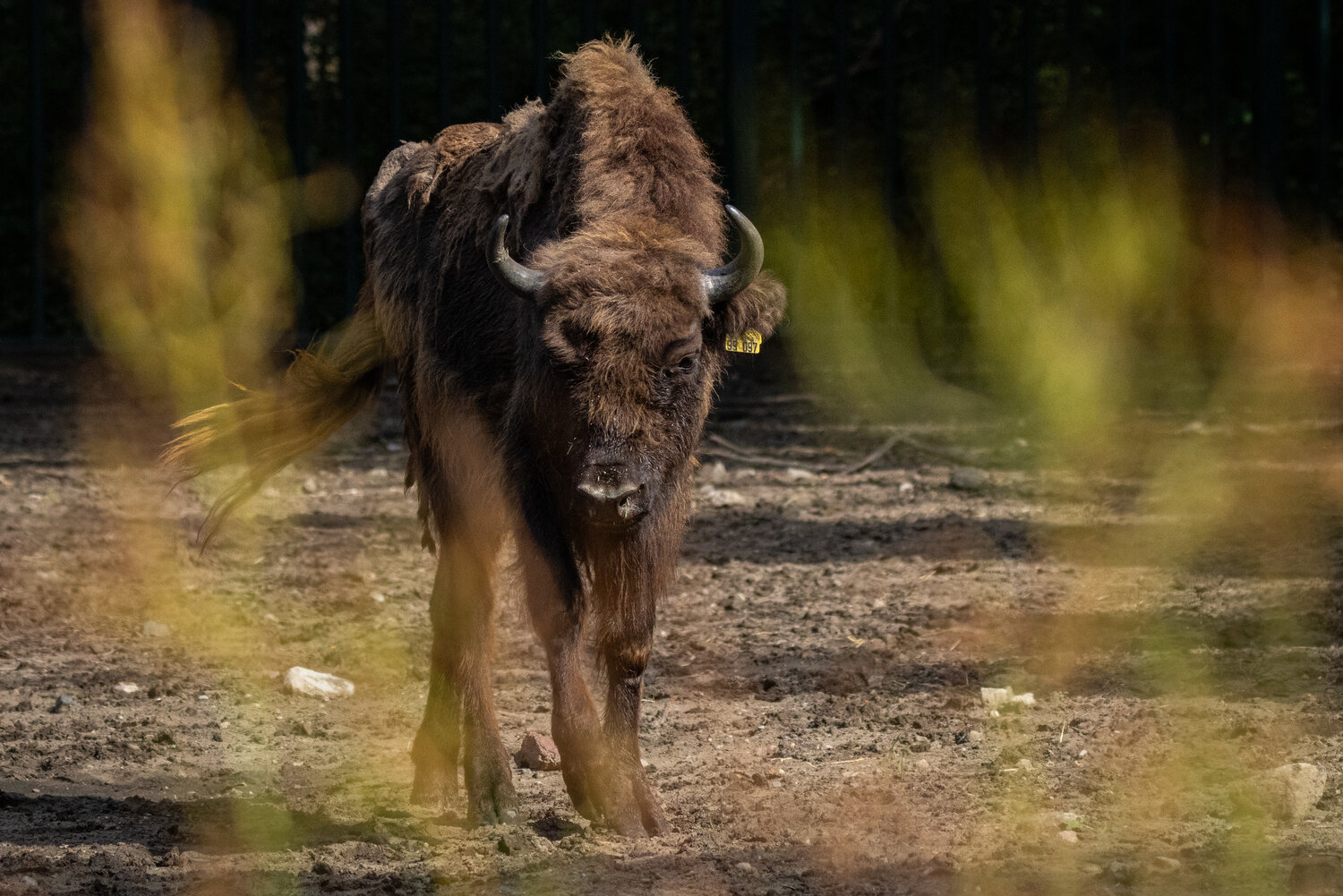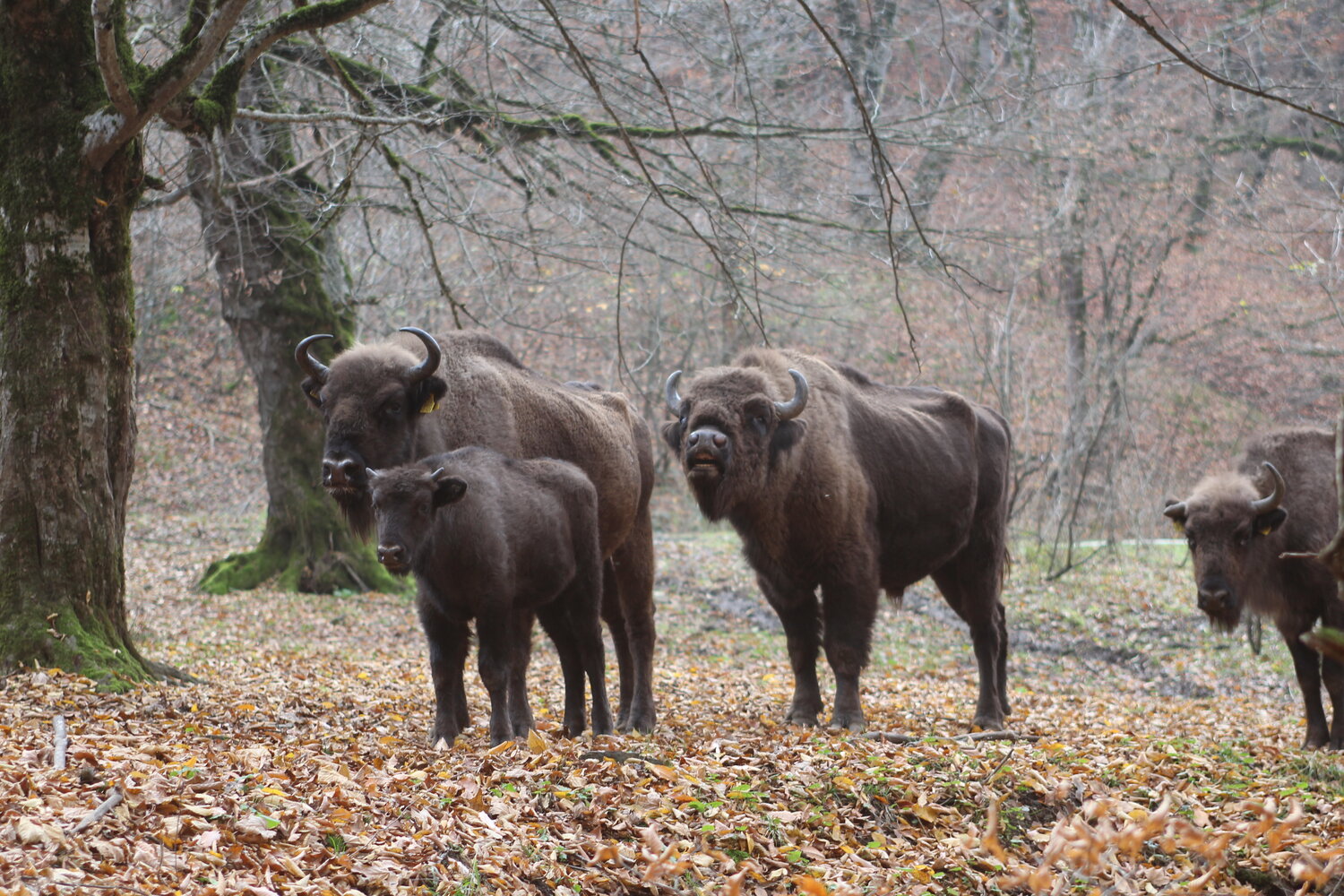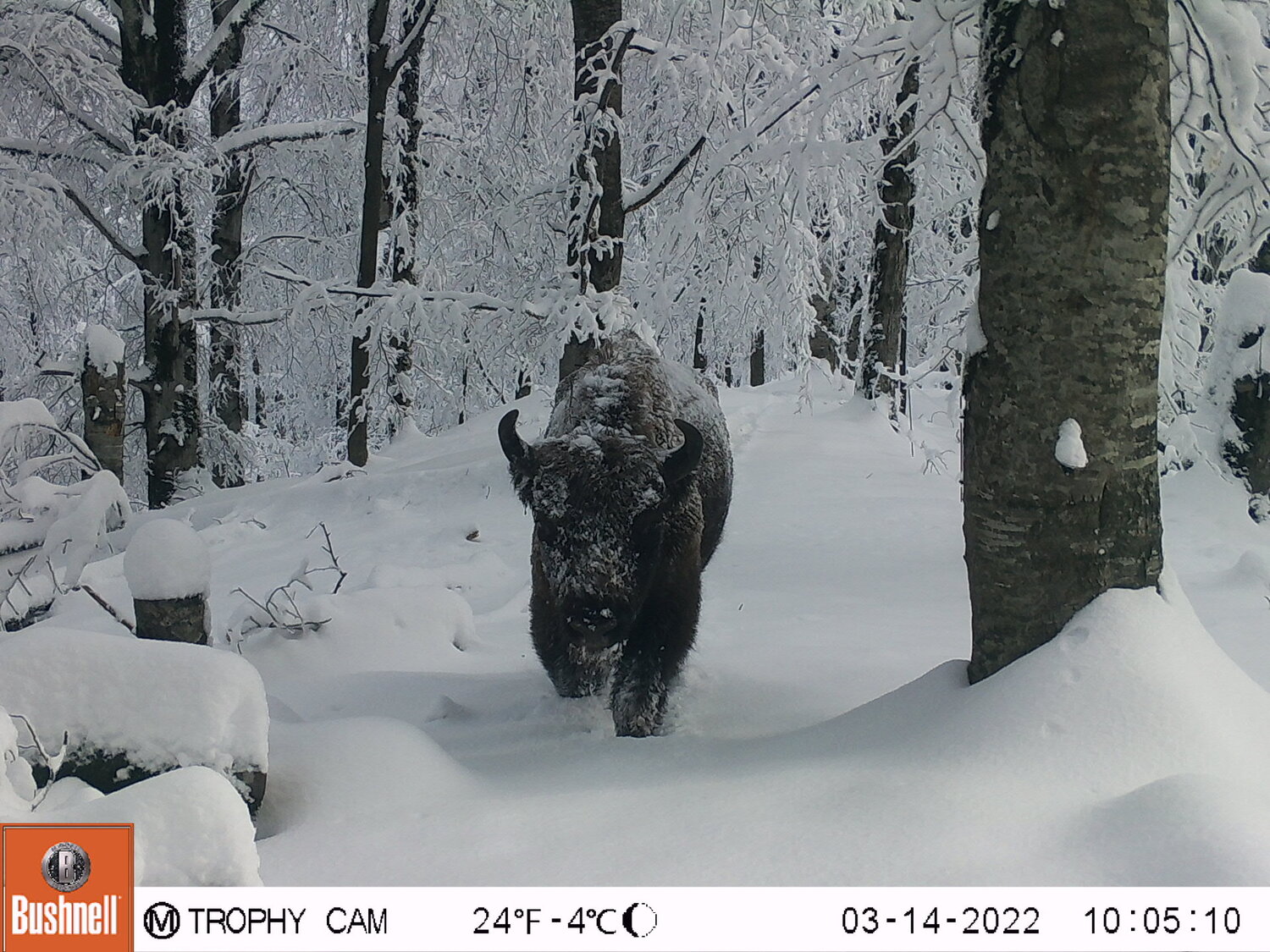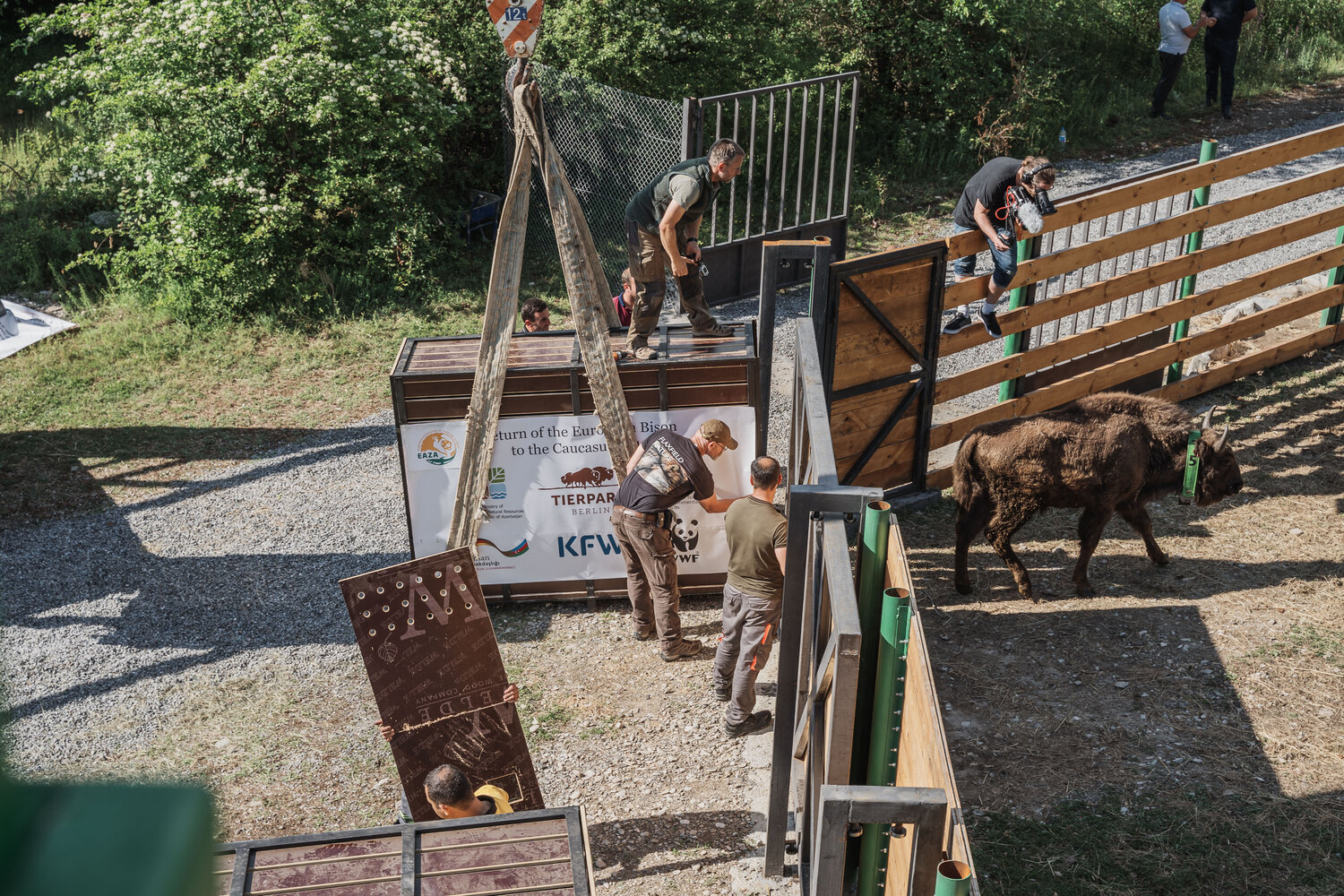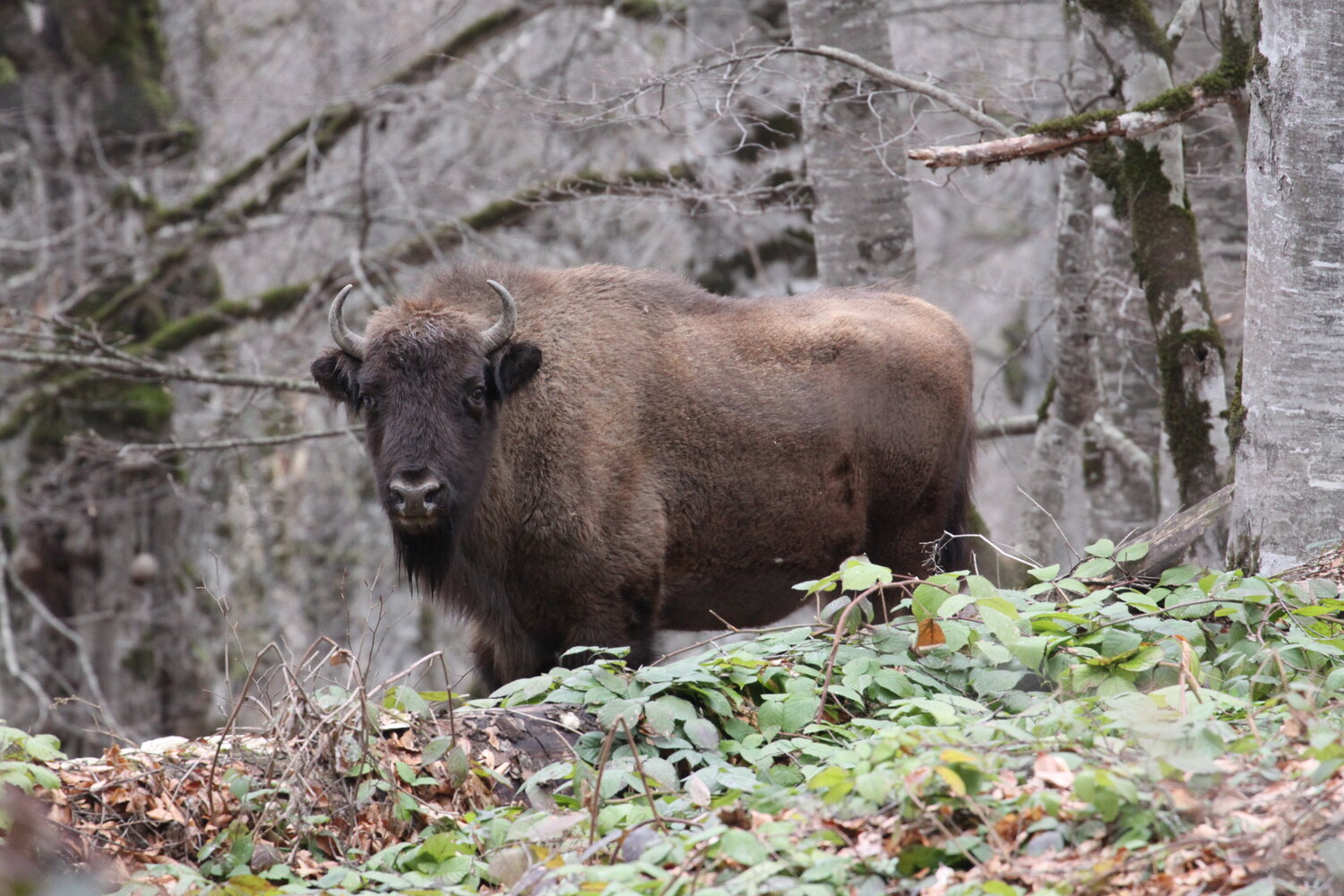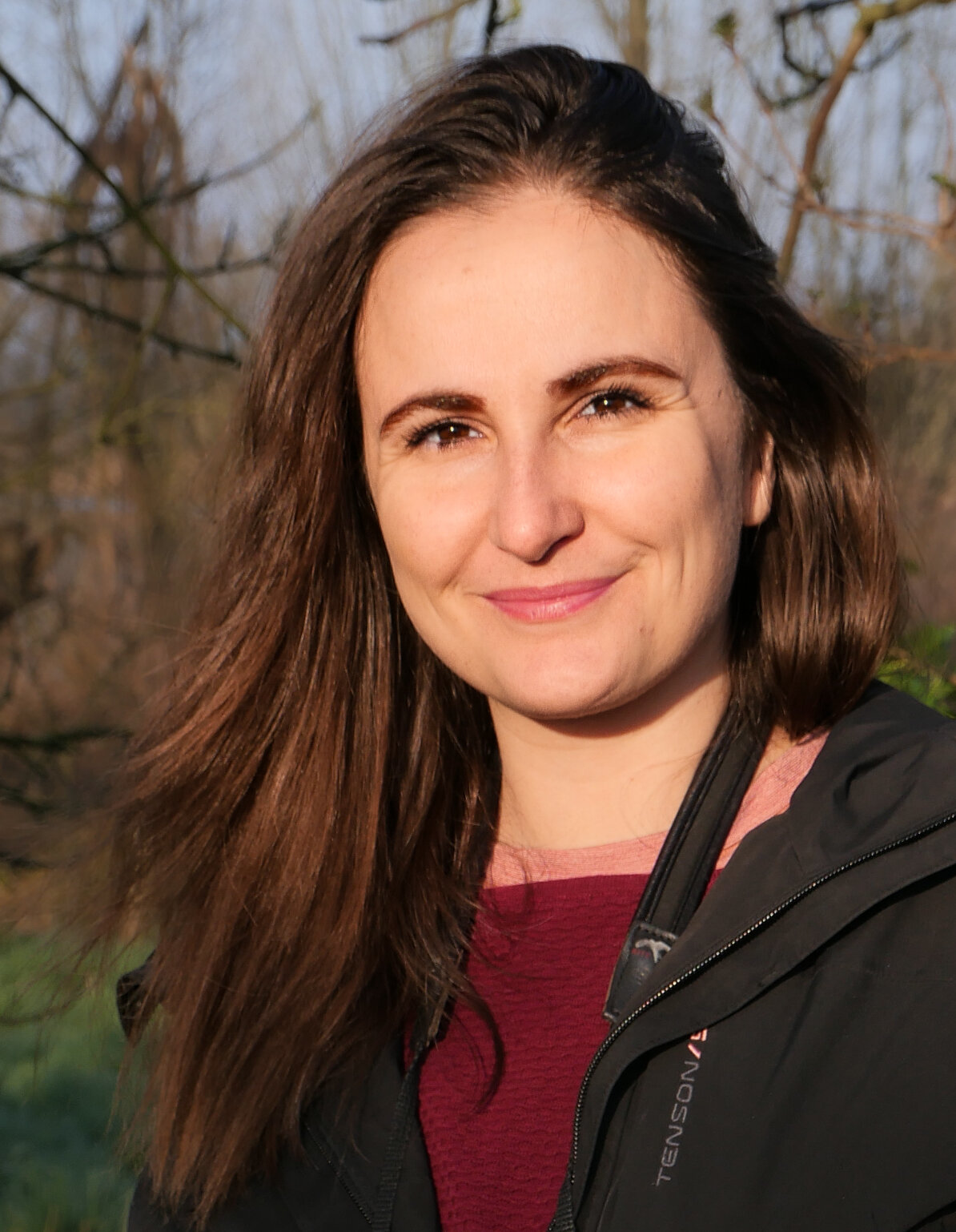© WWF
Rewilding Europe supports the Berlin Zoological Gardens and WWF Germany in the reintroduction of European bison in Shahdag National Park in Azerbaijan. When the last European bison was shot in the Caucasus in 1927, the European bison was considered extinct in its natural habitat. Thanks to the long-term commitment of a large number of nature and species conservation organizations and the implementation of targeted conservation measures, more than 6,200 bison are now roaming the landscapes of the European continent again.
We spoke to Sophie Monsarrat, Rewilding Manager at Rewilding Europe.
